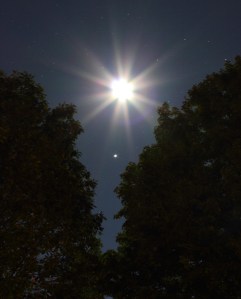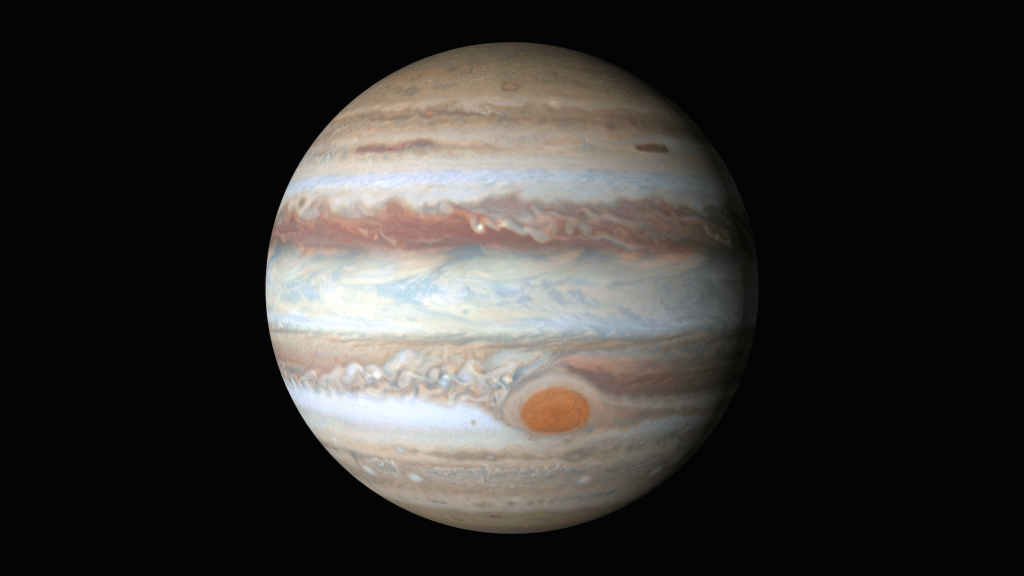This week, two amateur astronomers released footage of an impact event on Jupiter. The separate observations, one in Austria and one in Ireland, show a brief, small flash of light at the exact same time.
Phil Plait, Bad Astronomy writer for Slate, said the footage revealed “very strong evidence for an actual impact.” However, he noted that what kind of planetary object did the impacting was less clear; there’s not enough data at this point to determine whether the source was a comet or an asteroid.
Amateur astronomer, Gerrit Kernbauer, was using a 20 cm telescope in Mödling, Austria to observe Jupiter on March 17th. In the description of his video, Kernbauer stated that the “seeing” that particular night was not the best, so he hesitated in processing the videos at all. It wasn’t until 10 days later when he was looking through the footage that he found a strange bright light that had appeared for less and a second.
“Seeing” is a term used by astronomers to describe the sky’s atmospheric conditions. Due to changing temperatures, wind patterns, and dust particles in the atmosphere, astronomers sometimes have a difficult time stably collecting the light from stars and other objects in the sky. When atmospheric conditions are unstable, astronomers will say there are “poor seeing conditions.”
This effect is why stars often appear to “twinkle.” It’s also the reason why many observatories are built at high altitudes where the atmosphere is thinner and therefore the “seeing” is generally better.
When Jupiter is visible in the sky, it’s a popular object for astronomers to watch. It’s so bright that you can often easily see it with your naked eye. But for someone to catch an impact event, you’ll need the right technology, experience, and a little bit of luck.

Typically, one observation of this type of event would not be enough evidence to convince astronomers of an impact. That’s because a flash of light from a telescope’s image could also be caused by a technical error or perhaps something else in the telescope’s line of view.
However, a second observer also happened to be taking a time-lapse video of Jupiter at the exact same time. John Mckeon, an amateur astronomer from Swords, Ireland, said on his YouTube video that “the original purpose of the imaging session was to get this time-lapse, with a happy coincidence of the impact in the second last capture of the night.”
Before the small flash in the video, you can see other objects transiting across Jupiter. These are some of the largest of Jupiter’s 67 known moons including Io, Ganymede and Europa.
As the largest planet in our solar system, Jupiter is no stranger to impacts. The first time scientists witnessed a collision with the planet was back in 1994 when Jupiter was slammed by the large comet, Shoemaker-Levy 9. The impact itself was on the far side of the planet as it faced the Earth, but once Jupiter rotated a bit scientists used the Hubble Space Telescope to see the impact site that Shoemaker left behind.

In recent years, scientists have caught Jupiter impacts in 2009, twice in 2010, and in 2012. In addition to the impacts scientists have identified on camera, there are many that they miss. If Jupiter is hit with a small impact on its far side, or if Jupiter is too close to the Sun, it’s unlikely that a scientist will notice them.
While this month’s impact isn’t all that uncommon, it was particularly special that it was discovered by amateur astronomers (albeit very skilled amateur astronomers with high quality equipment).
As off-the-shelf astronomy technology increases in quality and decreases in cost, we can expect more observations like these to take place all over the world. With more people pointing their telescopes up at night, detections of Jupiter impacts are only expected to increase as time goes on.































Comment